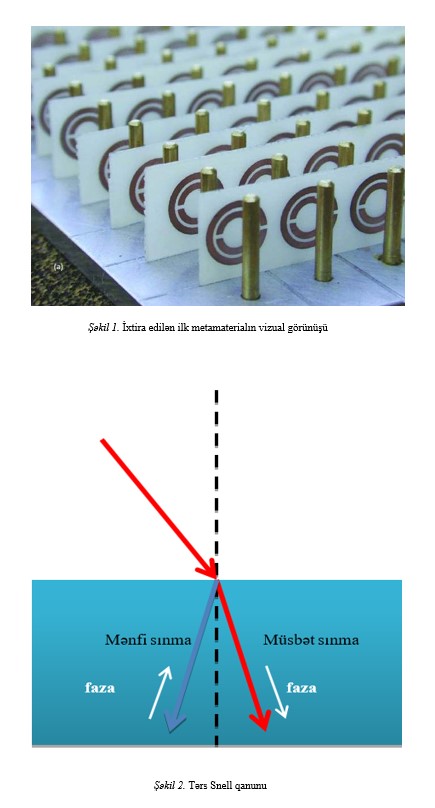ABSTRACT
One of the main parameters that determine the optical properties of materials is its refractive index. Recent studies have shown that the refractive index can take both
positive and negative values. This opens up new horizons to look at the physical laws that have been known in physics for centuries from a different perspective. Especially
in the optical branch of physics, the refractive index directly or indirectly participates in the formulas of almost all physical laws. A theoretical analysis of these
formulas shows that a negative refractive index fundamentally changes not only the sign of the mathematical expression, but also its physical essence. This, in turn, makes
it possible to explore a number of new properties and applications of materials with a negative refractive index that are not available in conventional materials. This
article provides general information about materials with a negative refractive index and explores the promising application possibilities of such materials using modern
literature in recent years. Mention was also made of the need to include topics related to the negative refractive index in the curricula of general physics subjects in
higher educational institutions.
Keywords: metamaterial, negative refractive index, optics
PACS: 78.67.Pt, 81.05.Xj
DOI:-
Received: 15.03.2023
AUTHORS & AFFILIATIONS
Azerbaijan State Oil and Industry University, 34 Azadlig ave. Baku
ORCID: 0000-0001-9243-2297
Graphics and Images

Fig.1-2
|
REFERENCIES
[1] В.Г. Веселаго. Электродинамика веществ с одновременно отрицательными значениями ε и μ. Успехи Физических Наук, 1967, 92, 517–526.
[2] V.G. Veselago. The electrodynamics of substances with simultaneously negative values of ε and μ. Soviet Physics Uspekhi, 1968, 10(4), 509–514.
[3] D.R. Smith, W.J. Padilla, D.C. Vier, S.C. Nemat-Nasser & S. Schultz. Composite medium with simultaneously negative permeability and permittivity. Physical Review Letters, 2000, 84(18), 4184–4187.
[4] S. Jahani & Z. Jacob. All-dielectric metamaterials. Nature Nanotechnology. 2016, 11, 23–36.
[5] J.B. Pendry. Negative refraction makes a perfect lens. Physical Review Letters. 2000, 85(18), 3966–3969.
[6] S. Vellucci, A. Monti, M. Barbuto, A. Toscano & F. Bilotti. Progress and perspective on advanced cloaking metasurfaces: From invisibility to intelligent antennas. EPJ Applied Metamaterials. EDP Sciences, 2021.
[7] A. Bandari. Seismic metamaterial protects buildings from earthquake damage. Scilight, 2020, (28), 281101.
[8] F. Karadağ, F.O. Alkurt, M. Karaaslan & E. Unal. Microwave Imager Design with 2.46 GHz Microstrip Patch Antennas. Adıyaman University Journal of Science, 2019.
[9] R. Kumar, M. Kumar, J.S. Chohan & S. Kumar. Overview on metamaterial: History, types and applications. Materials Today: Proceedings, 2022, 56, 3016–3024.
[10] V.G. Veselago. Negative refraction, light pressure and attraction, equation E=mc2 and wave-particle dualism. EPJ Applied Metamaterials. EDP Sciences. 2014, 1, 9.
[11] N. Gasimov, M. Karaaslan, C. Sabah & F. Karadag. Some aspects of mass-energy equivalence which appears in left-handed metamaterials. EPJ Applied Metamaterials, 2019, 6, 16.
|
